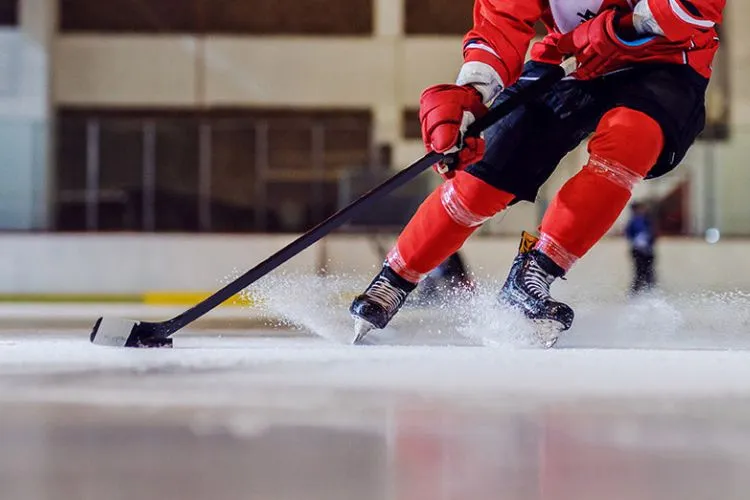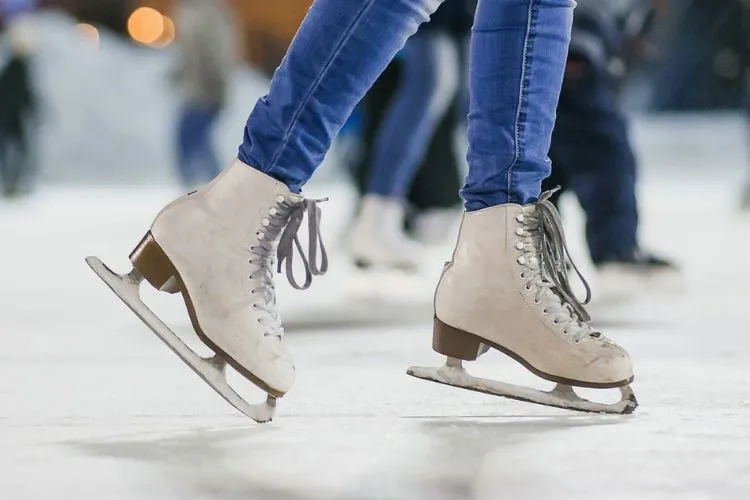Selecting the right size ice skates is crucial for any skater, whether you’re stepping onto the ice for the first time or preparing to compete.
The right fit affects not just your comfort but your performance as well. This comprehensive guide will walk you through what size ice skates should I get.

What Size Ice Skates Should I Get?
Ice skate sizing can be confusing at first, especially because it does not always match regular shoe sizes. Typically, ice skates run about one to two sizes smaller than your regular shoe size.
However, this can vary by brand and type of skate. Width is another important factor, with skates coming in narrow, regular, and wide fits. Understanding these basics is the first step toward finding your perfect pair.
Measuring Your Feet for Ice Skates
To start, you’ll need to measure both your feet’s length and width. It’s essential to measure both feet because they can be different sizes.
Use a ruler or a Brannock device for accurate measurements. Remember to stand while measuring since your feet spread when bearing weight.
Types of Ice Skates and Their Sizing
There are several types of ice skates: figure skates, hockey skates, and recreational skates. Each has its own sizing chart. For example, figure skates often require a snug fit to ensure precise movements, while hockey skates might offer a bit more room for maneuverability.
Brands also play a role in sizing, with each having its own fit profile. Researching or asking for advice on specific brands can help narrow down the size that will work best for you.
Trying On Ice Skates

When trying on ice skates, they should feel snug but not tight. A good fit means little to no heel lift and enough room to wiggle your toes.
Always try on skates with the socks you plan to wear on the ice. This ensures the fit is not too tight or too loose during actual use.
Key Considerations for Children’s Ice Skates
Children’s skates often present the dilemma of whether to buy a size that fits perfectly now or a size up to accommodate growth.
While adjustable-size skates are an option, ensuring the skate provides proper support is crucial. Skates that are too big can impede learning and even be dangerous.
Lacing Techniques and Their Impact
Lacing your skates correctly is as important as finding the right size. Proper lacing provides support and comfort and can even adjust the fit slightly.
There are various lacing techniques, so experiment to find which works best for your foot shape.
Care and Maintenance of Ice Skates
Taking care of your skates can help maintain their size and shape. Keep them dry and sharp for the best performance.
Regular maintenance also helps the skates last longer, ensuring you get the most out of your investment.
Common Mistakes to Avoid

Many new skaters make the mistake of choosing skates that are too large, thinking they need extra room. However, skates that fit well will offer the best support and performance.
Another common mistake is not trying on both skates. Since feet can be of different sizes, fitting both ensures you choose the right size for each foot.
You may also read: How Long Do Ice Skates Last? | How to Break in Ice Skates?
Understanding Skate Materials
The materials used in ice skate construction greatly influence the fit, comfort, and break-in time required. Traditional figure skates often feature leather boots which provide a sturdy, moldable fit that conforms to the foot over time, offering a personalized feel.
However, leather skates may require a longer break-in period compared to synthetic materials. In contrast, hockey skates and some modern figure skates are made from various synthetic materials that are lighter and more durable.
These materials typically offer less stretch, leading to a consistent fit over time but might not mold to the foot as leather does, affecting comfort. Additionally, synthetic boots often have a shorter break-in period, allowing skaters to enjoy a comfortable experience sooner.
Adjusting to New Skates
Adjusting to new skates involves a gradual process to enhance comfort. Start by wearing your skates at home for short periods, gradually increasing the time as your feet get accustomed.
Incorporate exercises such as ankle rolls and toe points to enhance flexibility and comfort in your skates. This approach helps your feet adapt slowly, reducing discomfort and improving your overall skating experience.
Frequently Asked Questions (FAQs)
How much room should you have in ice skates?
Your ice skates should fit snugly with just enough room to wiggle your toes. There should be no more than a finger’s width of space at the heel.
Can you wear thick socks with ice skates to improve the fit?
While thick socks can offer additional padding, they can also change how the skate fits. It’s best to wear the socks you plan to use regularly when trying on skates.
Is it better to buy ice skates one size bigger?
No, buying skates that are too big can lead to poor support and make it harder to skate. It’s best to find skates that fit well.
How do you know if your ice skates are too small?
If your toes feel cramped or you experience pain while wearing the skates, they might be too small. A well-fitting skate will be snug but not painful.
Should ice skates be comfortable right away, or is there a break-in period?
Some skates might feel comfortable immediately, while others may require a brief break-in period. However, skates should not be painfully tight at any point.
Conclusion
Finding the right size ice skates is essential for comfort, performance, and safety on the ice. By understanding how skate sizing works, measuring your feet correctly, and considering the type of skating you’ll be doing, you can find the perfect pair of skates.
Always try on skates before buying and remember that the right fit might differ slightly between brands and types of skates.

Matthew James is a passionate skater who wanted to create a platform to share his love for skating with others. With a vision to create a vibrant community of skaters, he aims to provide a space where skaters of all levels can connect, learn, and grow together.
